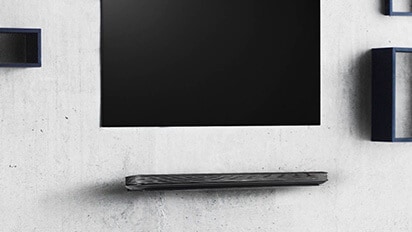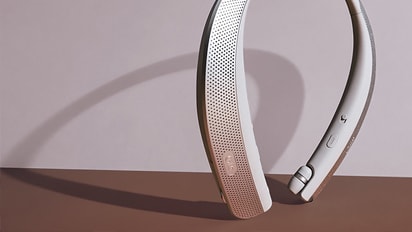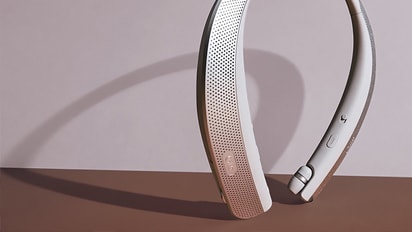At a Glance
Get the best out of your dishwasher by preventing unnecessary and unwanted leaking. Most leaking issues are related to installation, detergent, or maintenance.
If there is an error code displayed in the dishwasher's control panel, Please see our LG Dishwasher - Error Code List article.
LG Dishwasher - How to Fix Common Leaking Issues
Get the best out of your dishwasher unit by preventing unnecessary and unwanted leaking.
In this video, we will show you how to troubleshoot most common leaking issues caused by your dishwasher setup.
If you notice water leaking from the door sides of your unit, your LG dishwasher may have not been leveled properly upon installation or may have become unbalanced over time and is causing the unit to be tilted in some way causing leakage.
Before we start, a screwdriver, a leveler, an adjustable wrench, and gloves are needed.
Next, turn off the water supply line located underneath your sink.
Completely dry and wipe up any wet area or water around the sink and dishwasher.
Empty the unit of any dishes and silverware. We will also need to remove the racks for easy accessibility into the unit.
The dishwasher must be off, emptied, and completely dry when attempting to adjust the unit.
Lay some fresh towels on the floor where you will be working. Take a leveler and place it on the top front of the unit as well as on the inside, parallel to the wall cavity as shown here.
If the dishwasher is uneven, remove the mounting screws located near the top front of the dishwasher or on the sides as shown her, depending on your setup using a screwdriver.
Next, carefully remove the toe kick panel located on the bottom front of your unit with a screwdriver.
Carefully remove the insulation piece. To raise the back of the dishwasher to the approximate height of the cabinet cavity, turn the screws in in the direction of the indicating arrow printed on the base of the unit.
And turn the 2 front screws accordingly to control the back legs. To lower the rear of the dishwasher, turn the screw in the opposite direction of the arrow.
Now you will want to do the same for the front legs, except you will be turning the front legs with a wrench as the front legs are planted.
This may take several attempts adjusting your LG dishwasher from both the back and front legs until your unit is completely leveled.
Once leveled, make sure that the dishwasher is securely remounted as before completely dry and wipe up any wet area or remaining water left around the sink and dishwasher.
Turn on the water supply line and run a regular wash cycle to verify that your LG dishwasher is working normally. If you notice leaking coming from the bottom of your LG dishwasher, a loose connection around the 90 degree elbow joints and water supply line may be the result for leakage. If there are no visible signs of leakage, take a dry paper towel and touch around the water supply line in the 90 degree elbow joint.
Wet spots on a towel will indicate leaking. The 90 degree elbow joint is attached to the inlet valve and the water supply line is attached to the elbow joint as shown here.
Make sure that the Teflon tape is on the end of the 90 degree elbow joint that goes into the inlet valve before installing. Certain LG dishwasher models will have an inlet valve with a fixed 90 degree elbow joint pre-installed. So the only attachment will be the water supply line upon setup.
If it was leaking around the seal of the 90 degree elbow joints, look for any visible cracks on or around the 90 degree elbow joint.
If there are no visible cracks or damage, unscrew the water supply line from the 90 degree elbow joint and unscrew the 90 degree elbow joint from the inlet valve using an adjustable wrench.
Have a towel handy where some water may spill onto the floor when disconnecting a water supply line and the 90 degree elbow joint.
Make sure that the threading inside the 90 degree elbow joint and around the inlet valve hasn't been stripped or worn. Replace the 90 degree elbow joint if needed by purchasing a replacement part from your local home improvement store. Screw on the 90 degree elbow joint onto the inlet valve by hand and tighten firmly with an adjustable wrench.
For easy installation, face a 90 degree elbow joint toward the center of the dishwasher. Check the water supply line for degradation or stripped threading inside the water supply line connective screw. Replace if needed.
Screw the water supply line onto the 90 degree elbow joint and tighten firmly with an adjustable wrench.
Reinstall the insulation piece, and screw the toe kick panel back into place.
Completely dry and wipe up any wet area or remain water left around a dishwasher unit.
Turn on the water supply line and run a regular wash cycle to verify that your LG dishwasher is working normally.
With proper care and regular maintenance, your LG dishwasher is built for years to come.
Thank you for watching our customer support video.
We hope you enjoy your LG experience.
Try This
➜Ensure the Unit Is Level
Open the dishwasher and place a level inside the dishwasher against the top, sides, and bottom of the unit to ensure the unit is level.
Remove the bottom rack, pour about a gallon of water in the bottom of the dishwasher, and see if the water pools to one side or another. If the water level is off to either side of the tub the unit is not leveled correctly.
If the dishwasher is not level, please visit our LG Dishwasher - Leveling article.
➜Check the door gasket for buildup or damage.
Look for any food/grease buildup on the gasket or the area of the tub where the gasket would seal. If present, clean it away as this can cause leaking since the door cannot seal properly.
If the door seal is damaged or torn, this will require service. Please visit our Request a Repair page to schedule service.
➜Check the spray arms for buildup or damage.
Inspect the spray arms for any buildup or blockages. If present, remove the spray arms and clean with a soft brush and warm soapy water. Reinstall the spray arm and proceed to drying the drain pan for assistance clearing the error code.
If the spray arm is damaged or torn, this will require service. Please visit our Request a Repair page to schedule service.
➜Check the water connections.
A loose connection around the 90-degree elbow joints and water supply line may be the cause of leakage.
If there are no visible signs of leakage, take a dry paper towel and touch around the water supply line in the 90-degree elbow joint. Make sure that the threading inside the 90-degree elbow joint and around the inlet valve hasn't been stripped or worn. Screw the 90-degree elbow joint onto the inlet valve by hand and tighten firmly with an adjustable wrench.
➜Check cleaning detergent.
Dishwasher Pods/Tablets
Generally, pods or tablets contain the correct amount of detergent, however, if more than one pod or tablet is used it can lead to excessive suds and cause water to overflow.
Liquid or Powder Detergent
The dispenser has two marked levels for dishwasher detergent. Filling up the entire dispenser beyond the marked levels will lead to excessive suds and cause water to overflow.
Please see the recommended liquid or powder detergent levels below:
- 15 Line: Lightly soiled loads or soft water conditions.
- 25 Line: Heavily soiled loads or hard water conditions.
Dishwashing Liquid
*** It is recommended you NOT use dishwashing liquid inside your dishwasher. ***
Dishwashing liquid is super concentrated compared to dishwasher detergent and will create too many bubbles causing the water level inside the unit to overflow.
If the leaking continues, service will be required for a proper diagnosis. Please visit our Request a Repair page to schedule service.












